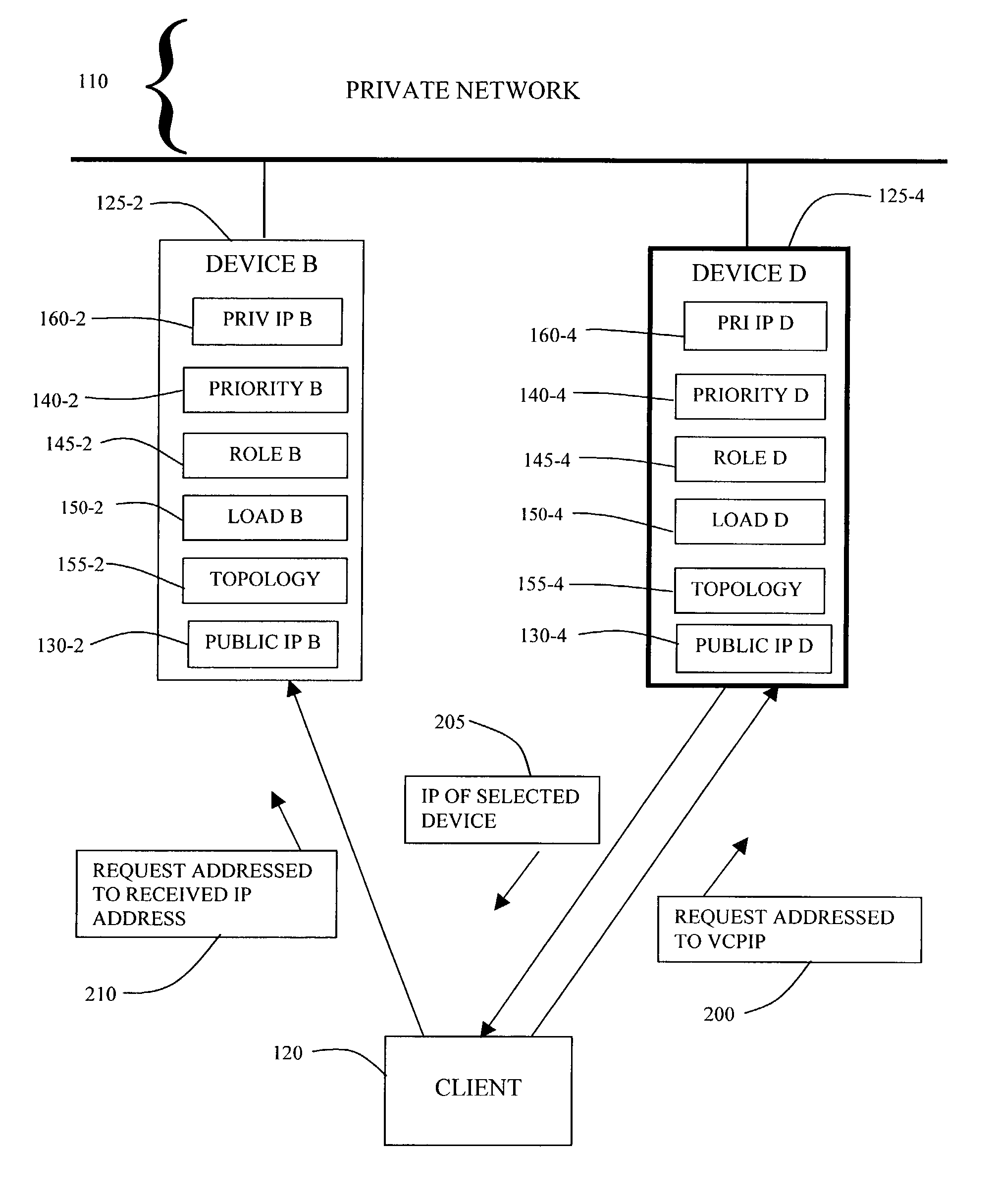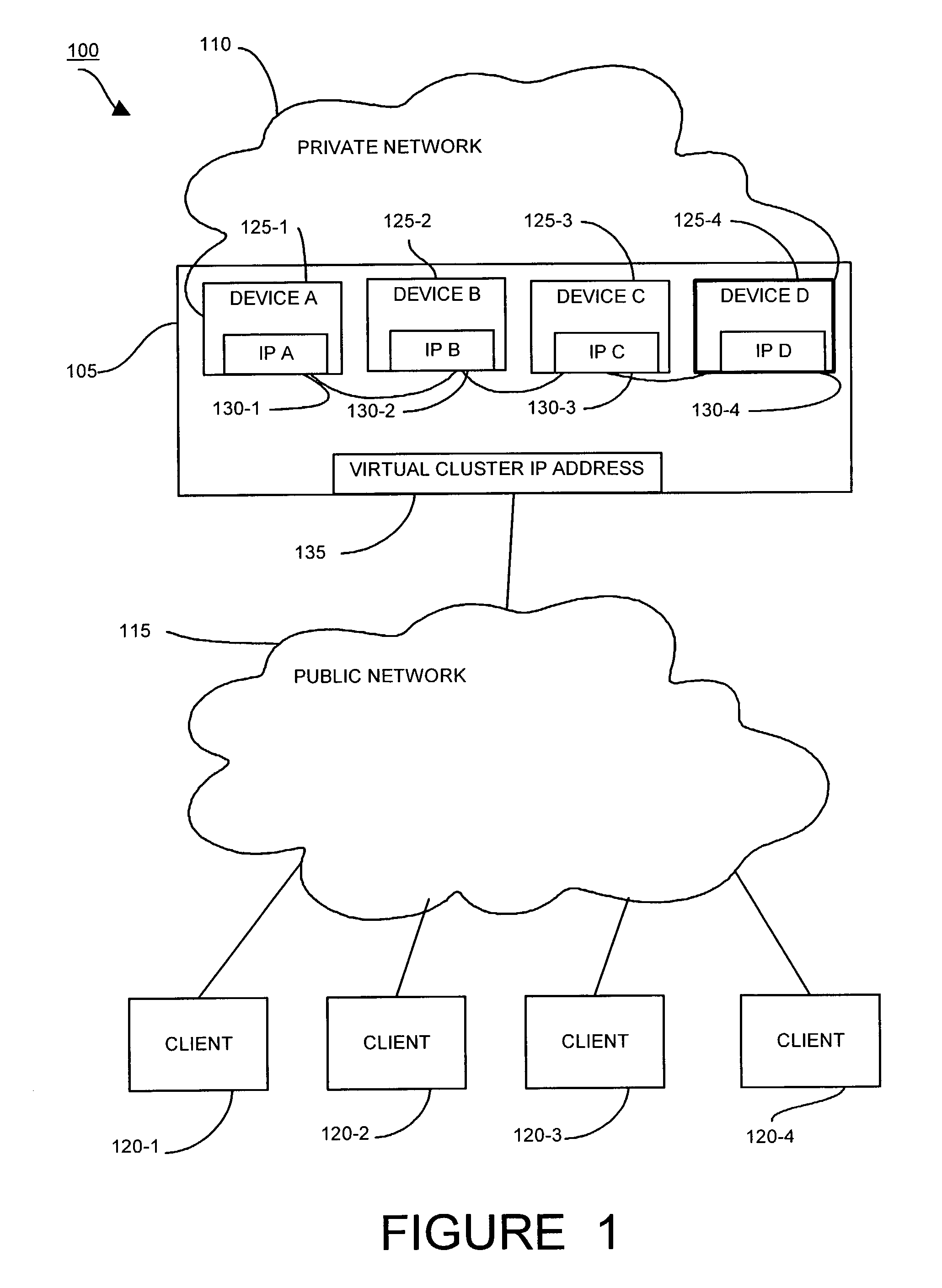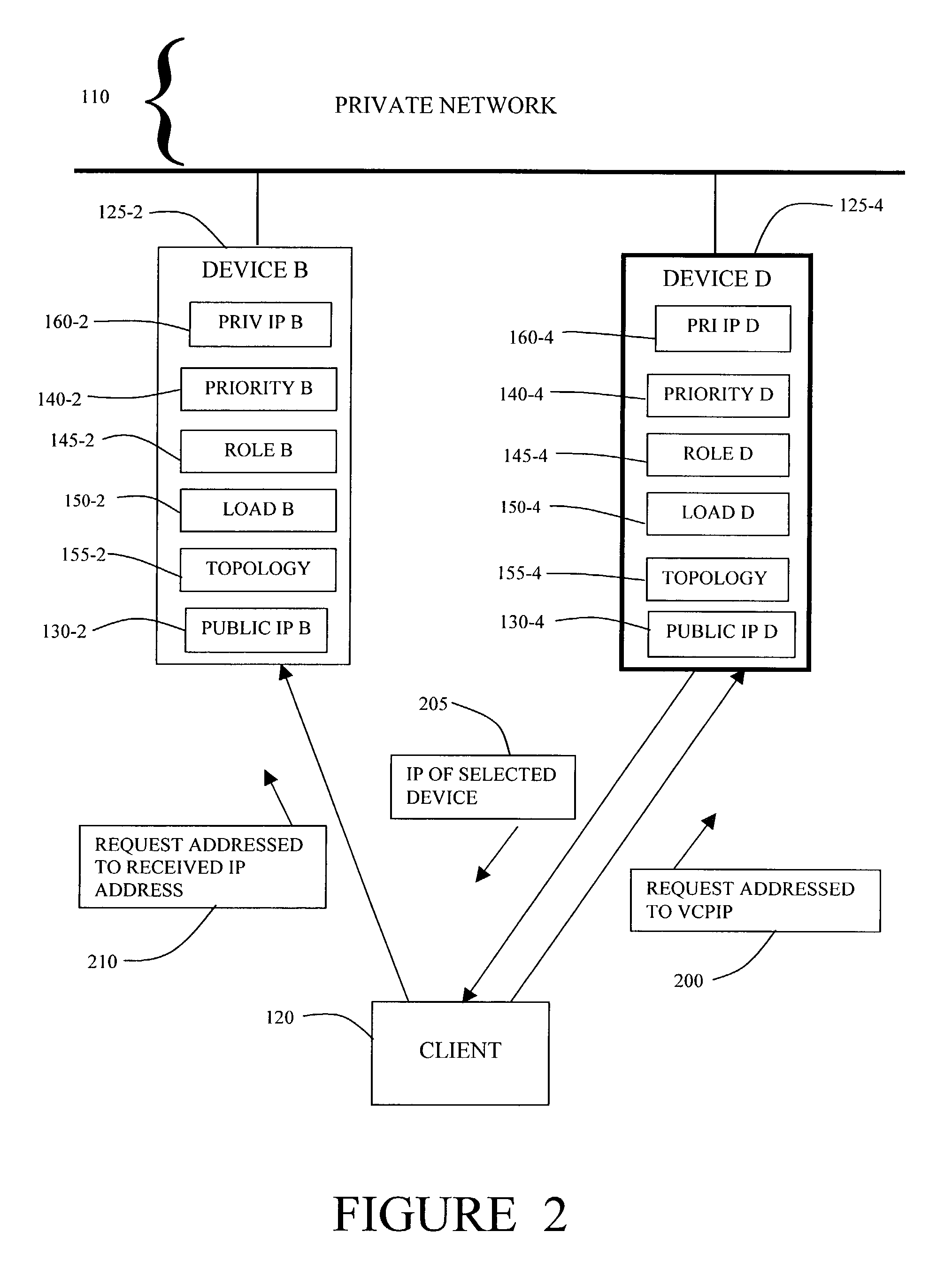Method and apparatus for load balancing in a virtual private network
a virtual private network and load balancing technology, applied in data switching networks, frequency-division multiplexes, instruments, etc., can solve the problems of inefficient load balancing of conventional vpn concentrators, inability to efficiently support conventional vpn concentrators, and inability to efficiently distribute existing connections or future incoming connections, etc., to achieve low load and balance load
- Summary
- Abstract
- Description
- Claims
- Application Information
AI Technical Summary
Benefits of technology
Problems solved by technology
Method used
Image
Examples
first embodiment
[0041]In the invention, when the client 120 initiates a connection to the private network 110, the client 120 transmits a initial request 200 addressed to the VCPIP 135.
[0042]Device D 125-4, as master device, responds to the request 200 addressed to the VCPIP 135. Device D 125-4 accepts the client request 200 and determines, based on the status and load of each device, which device in the VPN cluster 105 should handle the client request 200. The mechanism of this determination will be described below. In this example, Device D 125-4 is aware that Device B 125-2 is operational and that the load on Device B 125-2 is low compared to other devices in the cluster 105. Device D 125-4 selects Device B 125-2 to handle the client request 200. Device D 125-4 then transmits a return message 205 to the client 120 containing the IP address of the device selected by Device D 125-4. That is, Device D 125-4 transmits IP B 130-2 in the return message 205 to the client 120.
[0043]The client 120 addres...
second embodiment
[0044]In the invention, the initial request 200 initiates an Internet Key Exchange (IKE) negotiation with the master device 125-4. IKE is an Internet Engineering Task Force recommended protocol for secure network communications. IKE is based on a frame work protocol called Internet Security Association and Key Management Protocol (ISAKMP) and implements the Oakley key exchange. IKE is therefore also known as ISAKMP / Oakley. In the IKE negotiation, the client 120 and the master device, Device D 125-4, negotiate encryption and authentication policies.
[0045]The master device 125-4, at the completion of the IKE Phase 1 negotiation, sends an encrypted IKE notify payload with the IP address of the concentrator selected to handle the client's communication with the VPN.
[0046]In the second embodiment of the invention, the client 120, after receiving the IKE notify payload from the master device 125-4, initiates an IKE negotiation for encryption and authentication with the selected device, De...
PUM
 Login to View More
Login to View More Abstract
Description
Claims
Application Information
 Login to View More
Login to View More - R&D
- Intellectual Property
- Life Sciences
- Materials
- Tech Scout
- Unparalleled Data Quality
- Higher Quality Content
- 60% Fewer Hallucinations
Browse by: Latest US Patents, China's latest patents, Technical Efficacy Thesaurus, Application Domain, Technology Topic, Popular Technical Reports.
© 2025 PatSnap. All rights reserved.Legal|Privacy policy|Modern Slavery Act Transparency Statement|Sitemap|About US| Contact US: help@patsnap.com



